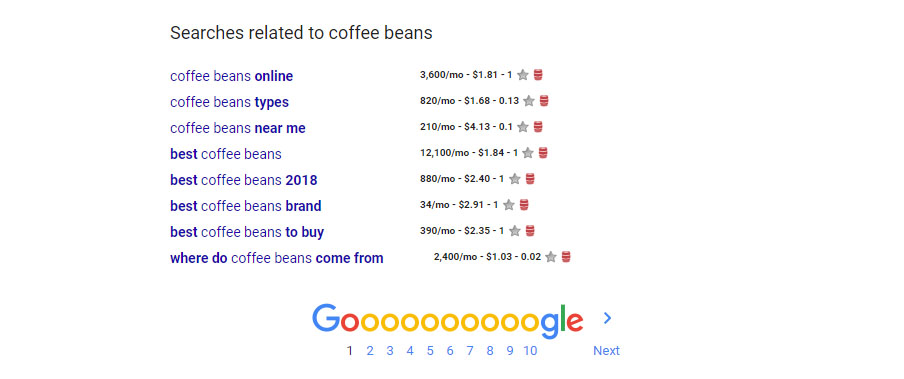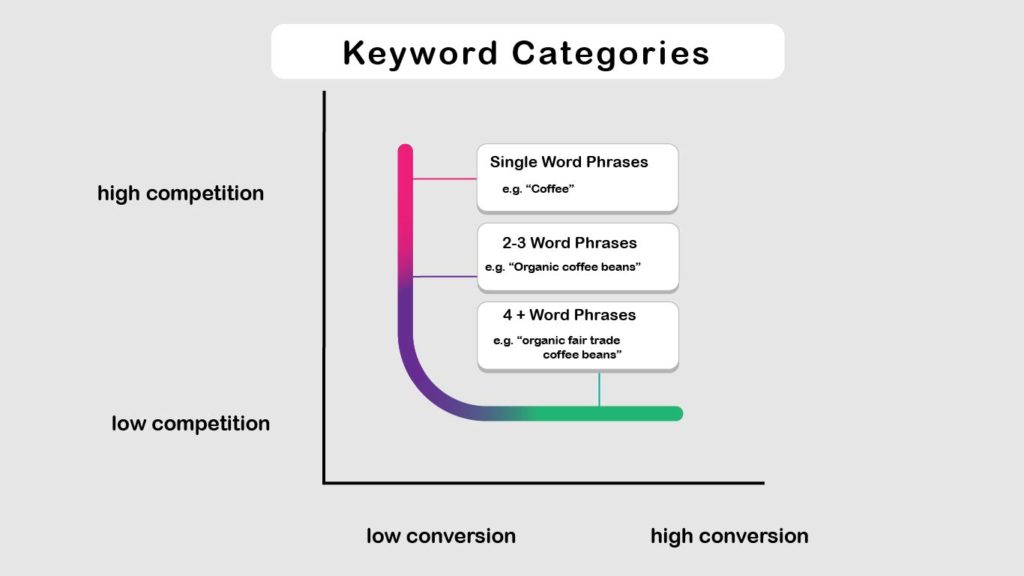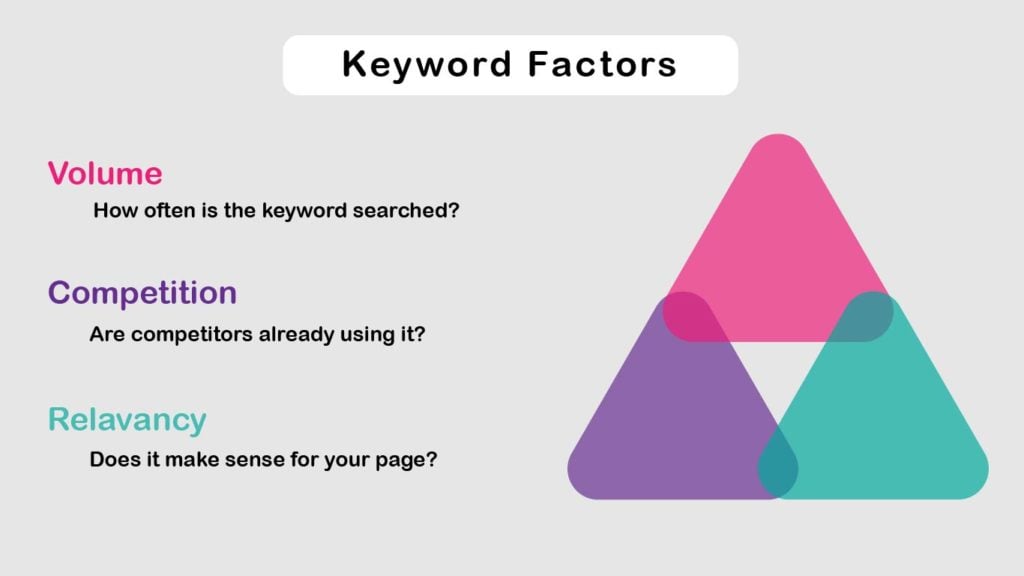Keyword research can seem daunting – it impacts every other SEO task that you perform. We know we need a list of words for people to find us, but how do we know which ones?
What is keyword research?
Keyword research is the process of defining words and phrases that people use in search engines. With keyword research, we can discover the terms that are important to our work and then optimize content around them.
Keywords are a compass for an SEO campaign: they tell us where to go and if we’re hiking in the right direction. They also help us figure out how our target audience thinks. They are a great resource to unearth what potential customers are searching for.
1. How to Find the Terms
Ask yourself, “What topics do people search for that are related to my business?”
Note: we aren’t looking for keywords quite yet. We’re outlining broad topics that we’ll later use to find the right keywords.
If you are selling organic, fair trade, gluten-free coffee, your topics might look something like this:
Specialty coffee
Coffee beans
Fair Trade
Google it
Once you have an idea of a keyword, put it into Google.
See what Google suggests for you, add these to your list. Don’t forget to scroll down and check the 8 keywords at the bottom under “Searches related to ______.”

These are awesome leads because if Google suggests a keyword, we already know that people are searching for it at a high volume and we don’t have to guess whether or not it is popular.
Do the same thing in the YouTube search bar.
Wikipedia
Wikipedia is a bonanza of niche keywords. It has a litany of specific topics curated into highly organized articles and categories!
Enter a broad keyword and check out the “Contents” header. These offer subtopics that could make great keywords.
You can click through the internal links to generate great ideas for keywords from related entries too.
2. Tools for Evaluating Keywords
Google Keyword Planner
You know the data from this keyword planner is accurate because it comes straight from Google. It is designed to help people with Google ad campaigns, not SEO. With that being said, it is still a great tool to make a list of keywords and to find queries that get lots of searches.
Keywords Everywhere
Keywords Everywhere is a free plugin for Google Chrome that shows you keyword ideas from around the web and evaluates them.
Once you install it, you do in fact see keywords everywhere. The extension integrates across the web and it shows you related keywords, what people also search for, and a bundle of data about each keyword. It shows you the volume, the CPC, and the competition.
You can also export everything seamlessly as a CSV file.
SEMrush, Ahrefs, and Moz also offer similar tools for this.
3. Keyword Difficulty
Keywords are defined into three main groups: head, body, and the long tail. There are no “best” categories, they all come with their own set of pros and cons. It’s important to understand each and evaluate your SEO needs when choosing them.

Head Terms
These are single-word phrases with a high search volume… and with a high volume also comes a whole lot of competition. “Restaurants” or “golf” are examples of head terms. The term is broad and it does not exactly specify what the searcher is really looking for. Do they want to go golfing, watch golf, or learn more about golf? These terms don’t usually convert very well.
Body Keywords
These are slightly longer and slightly more specific than head terms. Examples might include, “Chinese restaurants” or “golf on demand.” We’re getting a better idea of what our searcher really wants, and these keywords are a bit less competitive than the head terms.
Long Tail Keywords
These keywords define a niche. The 4+ word phrases are specific and concise, things like “Chinese restaurants Portland Maine takeout” or “golf courses Portland Maine driving range.” The more specific a term becomes, the less often it is searched for. But this also means that there are fewer people competing over the term. Focusing on a niche can help you target your specific audience.
There’s no best keyword category, but when it comes to competition, long tail keywords usually have the least. Each category has pros and cons and a solid mix of each type could be beneficial when defining an SEO strategy.
4. Judging Keyword Competition
To quickly judge a keyword’s competition level, Google it. Then, pay attention to who pops up. If the whole front page is high authority sites (like Wikipedia or large and established businesses), chances are it might be difficult to get your content among their ranks for that keyword.
But! If you see a handful of smaller pages and blogs on the first page, it means there’s a high chance that yours might be able to join them with the proper SEO techniques.

5. Pick Some Keywords, Weigh the Factors:
When it comes time to actually decide upon which keywords to use, there are a few factors to consider. It’s important to think about the search volume and click-through-rate (CTR) of a keyword. It is the difficulty of a keyword, the cost-per-click, the fit for your purposes, and the keyword trends in your industry that define the usefulness of a search query. This can be overwhelming, but with the right research and tools, organizing your keywords becomes a breeze!





